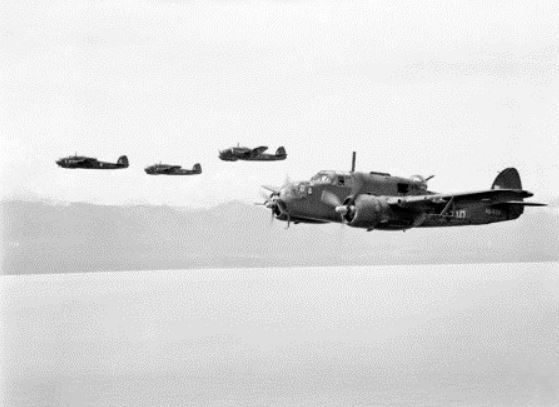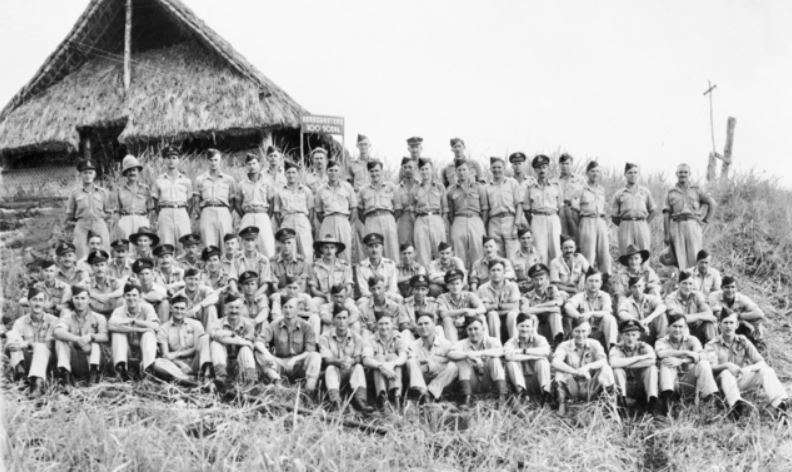No. 100 Squadron RAAF
From Our Contribution
 AWM OG3362 Four Beaufort's from 100 Squadron in Wewak area of New Guinea | |
 100 Squadron staff outside their HQ on Goodenough Island |
Contents
[hide]Brief History
No. 100 Squadron was formed at RAAF Station Richmond in February 1942 as a bombing and maritime patrol squadron. Initial staff included the personnel who had survived from the RAF's No. 100 Torpedo Bomber Squadron which had been destroyed in Malaya. It was the first Squadron to be equipped with Australian-built Beauforts. No. 100 Squadron was deployed to Mareeba in Queensland during May 1942, where it conducted further torpedo bomber training and anti-submarine patrols.
In June 1942, a detachment of No 100 Squadron Beauforts based at Port Moresby carried out the RAAF's first Beaufort operation when seven aircraft bombed shipping in the Lae area, sinking a Japanese vessel while suffering the loss of one aircraft and crew. The squadron was moved to Laverton in July top fly training flights off the NSW and Victoria coastlines, before moving to Bohle, north of Townsville. In September they deployed to Milne Bay in PNG, flying reconnaissance and bombing missions against coastal shipping. On 6 Oct 1942, the Squadron conducted the first land-based torpedo strike, and over the succeeding months a number of enemy vessels were damaged or sunk – including a Japanese cruiser, for the loss of two aircraft and their crews.
No 100 Squadron also took part in the famous Battle of the Bismarck Sea in March 1943, when eight torpedo-armed Beauforts met with limited success against a dispersed Japanese convoy. This was to be the squadron's last torpedo-bombing mission, thereafter operating solely in the level-bombing mode – striking targets by night, in particular, the Japanese fortress at Rabaul. From October 1943 onwards, the squadron had a succession of moves, including Goodenough Island, Nadzab, and finally Tadji. Bombing operations against Japanese troop concentrations hidden in the jungles continued throughout this period. On 11 September 1944, the squadron conducted operation 'Wewak Welter' - an all-out offensive against the Japanese airfield at Wewak supporting the 6th Division - dropping over 35 380 kg of bombs on the target. The squadron's final war sortie occurred on the morning of the day Japan surrendered.
Folowing the close of hostilities No. 100 Squadron was involved in leaflet drops over Japanese positions and escorting single-engine fighters on ferry flights back to Australia until it disbanded in New Guinea on 19 Aug 1946.
Battle Honours
Individual Honours
Squadron Personnel
Notes